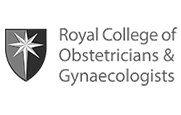Robotic / Laparoscopic Endometriosis Surgery
Surgery for endometriosis
Endometriosis is a common condition that causes pain and fertility issues that can be managed medically depending on the symptom severity and the treatment goals. Sometimes surgery may be required however the potential benefits versus the potential risks need to be delicately balanced before deciding to undergo surgical treatment. Surgery for endometriosis should be performed via minimally invasive surgery, either laparoscopically or robotically. The decision to undergo surgery is easier when the symptoms are severe and medications provide inadequate relief. However, timely detection and treatment of early stage disease can effectively treat the condition and prevent the progression to a more advanced stage, when a more extensive surgery is required. Medical literature consistently reports long delays in diagnosis and treatment of endometriosis.
Surgery for superficial endometriosis.
Endometriosis can be classified into 3 different types: 1) Superficial peritoneal endometriosis, 2) Ovarian endometriotic cysts, and 3) Deeply infiltrative endometriosis (DIE).
Superficial endometriosis is characterised by small lesions as tiny as a few millimeters on the lining of the pelvis. The disease severity is usually classified as mild, though it can be widespread. These lesions are relatively easy to treat, preferably by excision. It is important to note that mild severity does not equate to mild levels of pain, and women can still experience debilitating pain.
Surgery for ovarian endometriotic cysts (Endometrioma / Chocolate cyst)
Surgery for ovarian endometriotic cysts can have a significant effect on fertility potential, particularly if there are endometriotic cysts on both ovaries. Prior to surgery, a blood test measuring the level of Anti-Mullerian hormone (AMH), a measure of fertility reserve, may be performed. Endometriomas can be surgically treated by 2 methods, either via a cystectomy where the cyst wall is completely removed, or by drainage of the cystic content and cauterizing the cyst wall. With the second method, the endometriotic cyst wall is treated by cautery however it is not completely removed. Cystectomy causes slightly more harm to the ovary at the interface between the cyst wall and ovarian cortex, but there is a lesser chance of cyst recurring in the future. Whereas with the drainage and cautery method, there is less harm to the ovary but a higher chance of endometriotic cyst recurrence. Cystectomy is preferred when the ovarian reserve is not already compromised or when there is no plan for further pregnancy. Drainage and cautery is highly recommended for women with low AMH level to minimise further compromise to their ovarian reserve. For women who are not planning for pregnancy following surgery, oral contraceptive pill (OCP) has been shown to lessen the chance of endometrioma recurrence. Mirena can reduced endometriosis recurrence but is not as effective in reducing endometrioma recurrence as the OCP.
Surgery for deeply infiltrative endometriosis (DIE)
Surgery for deep infiltrative endometriosis is much more complex and should be done correctly in the first place as postoperative scarring makes subsequent surgery more difficult. Appropriate work up, including a specialized DIE ultrasound when indicated is helpful for appropriate surgical planning. The surgery should ideally be performed by surgeons with expertise and experience with deep endometriosis surgery. If the patient has been found to have other pelvic organ involvement, including bowel, bladder / ureter, or diaphragm / lung, appropriate preoperative review by relevant specialist surgeon should be organised and surgery planned such that they will be available if their expertise is required.
Surgery for bowel endometriosis
The bowel is the most common non-gynaecological organ to be involved by DIE, particularly the rectosigmoid segment of the bowel. Whilst it is common to have some mild bowel symptoms in patients even with superficial peritoneal endometriosis, every bowel symptom should be carefully assessed to rule out bowel DIE. This is done using a specialized DIE ultrasound however a positive result on ultrasound alone is not adequate indication for surgery . Surgery for bowel DIE is usually avoided unless significant symptoms persist despite a trial of medical therapy. Patients should be assessed by an expert colorectal surgeon who is familiar with the condition of bowel endometriosis. The 3 types of surgery for bowel endometriosis are: 1) Rectal shaving, 2) Disc excision and 3) Segmental bowel resection. Rectal shaving is the most conservative option, whereas segmental bowel resection is the most radical. The more conservative option is usually preferred, with segmental bowel resection performed for larger and multiple lesions where other options are not satisfactory.
Surgery for bladder and ureteric endometriosis
DIE can affect the bladder or ureter therefore urologist involvement during such surgery may be of benefit due to their specialised expertise. Following surgery for bladder or ureteric endometriosis, a catheter or an ureteric stent may be required for a short period of time during the healing phase to allow drainage of urine.
Surgery for diaphragmatic and lung endometriosis.
Surgery for diaphragmatic and lung endometriosis is very rare and is usually associated with aggressive disease in the pelvis. It is not uncommon to find a few spots of endometriosis over the right side of diaphragm, which doesn’t need to be treated if asymptomatic. On the rare occasions where it causes severe symptoms; surgery can be considered with appropriate cardiothoracic surgeon’s support.
Surgery for endometriosis involving pelvic nerves and sciatic nerve
Our knowledge of DIE is constantly expanding, and we now have better understanding of it can involve the pelvic nerves including the largest and longest nerve in the body, the sciatic nerve. Pelvic nerves are located deep in the pelvis therefore endometriosis that involves the pelvic nerve are often the most aggressive form of DIE. Working in deep pelvis around the pelvic nerves requires additional understanding of deep pelvic anatomy and pelvic functional neuroanatomy. Neuropelveology is an exciting new surgical pelvic discipline that specialises in conditions affecting the pelvic nerve, and the neuropelveology knowledge is immensely helpful in dealing with endometriosis affective pelvic nerves. Dr Chou is very fortunate to have been under the tutelage of Professor Marc Possover, the founder of the discipline, and has achieved the highest, International Society of Neuropelveology Level 3 Certification.















